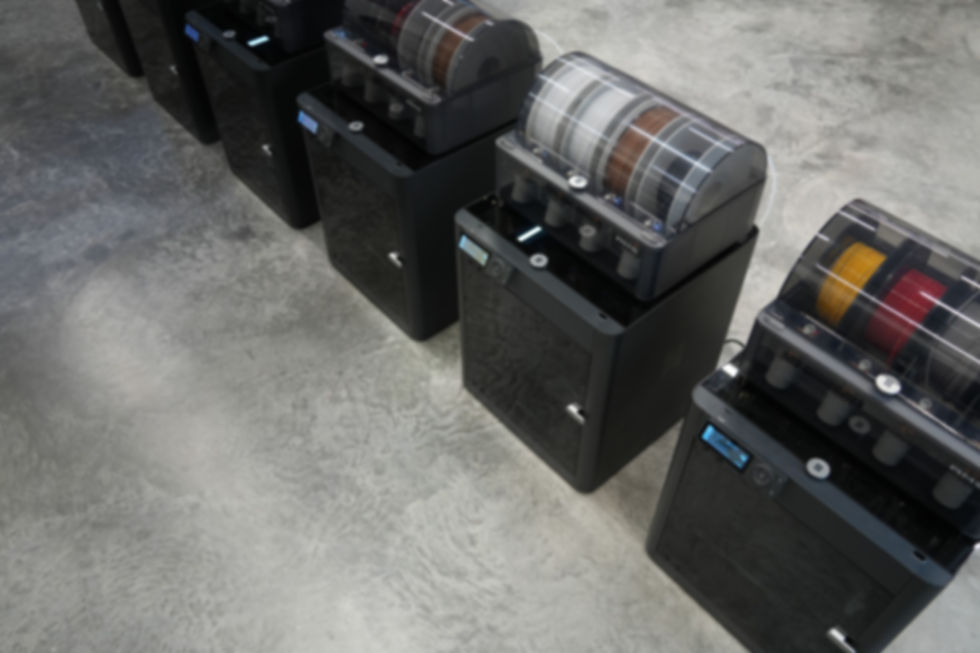

We are distinguished by a high degree of automation, a conscientious approach and the constant drive for optimization.
precision
The use of reliable machines as well as regular and conscientious maintenance lead to a high degree of precision, repeatability and reliability.
speed
By using several 3D printers in parallel, it is possible to produce many components quickly. The FDM process is also characterized by its short lead time, with no need for tool production .
batch sizes
Due to the parallel use of several identical machines around the clock, the production of series components such as housings, brackets and much more is also possible.
Vorteile der Additiven Fertigung
Die Additive Fertigung bietet entscheidende Vorteile gegenüber klassischen Produktionsverfahren wie Spritzguss und CNC-Bearbeitung. Von höherer Flexibilität über schnelle Prototypenentwicklung bis hin zu kosteneffizienten Anpassungen – dieses Verfahren ermöglicht innovative Lösungen, die traditionelle Methoden oft übertreffen. Entdecken Sie, wie die Additive Fertigung Ihre Produktentwicklung beschleunigen und wirtschaftlicher gestalten kann.
Höhere Flexibilität
Mit der Additiven Fertigung lassen sich Bauteile herstellen, die in ihrer Form und Funktionalität weit über die Möglichkeiten herkömmlicher Verfahren wie Spritzguss hinausgehen. Komplexe Geometrien, die traditionell schwer umsetzbar wären, entstehen präzise und ohne zusätzlichen Werkzeugaufwand – ideal für maßgeschneiderte Designs und individuelle Lösungen.
Prototyping
Verkürzen Sie Ihre Entwicklungszeit mit Additiver Fertigung. Dank schneller Prototypenerstellung und flexibler Anpassungsmöglichkeiten bringt dieses Verfahren Ihre Ideen schneller auf den Markt. Iterative Prototypen sind im Vergleich zu Spritzguss viel günstiger und lassen sich sofort optimieren.
Kosteneffizienz
Additive Fertigung spart Kosten, da keine teuren Werkzeuge wie Spritzgussformen erforderlich sind. Dies macht sie nicht nur für Kleinserien, sondern auch für die Produktion von Prototypen und Einzelstücken wirtschaftlich attraktiv. Die Herstellungskosten bleiben unabhängig von der Stückzahl niedrig, was auch eine schnelle Umsetzung individueller Anpassungen ermöglicht.
Anpassungsfähigkeit
Die Additive Fertigung erlaubt schnelle Produktanpassungen auch während der Fertigung, ohne kostenintensive Werkzeuge wie Spritzgussformen ersetzen zu müssen. Änderungen, wie das Hinzufügen einer Bohrung oder eine Formanpassung, lassen sich problemlos und ohne Verzögerung umsetzen – ideal für individuelle Wünsche und spontane Optimierungen.

production preparation
Material selection
Different applications require different materials. From simple PLA to PETG, ABS and ASA to PC, everything is possible. Flexible and fiber-reinforced materials are also possible.
If your project requires a specific material or color, please feel free to contact us.


post-processing
Threaded inserts | M2 to M8
Using fused thread sleeves, secure and durable screw connections can be created in 3D printed parts. We are happy to construct the hole provided for this purpose.










